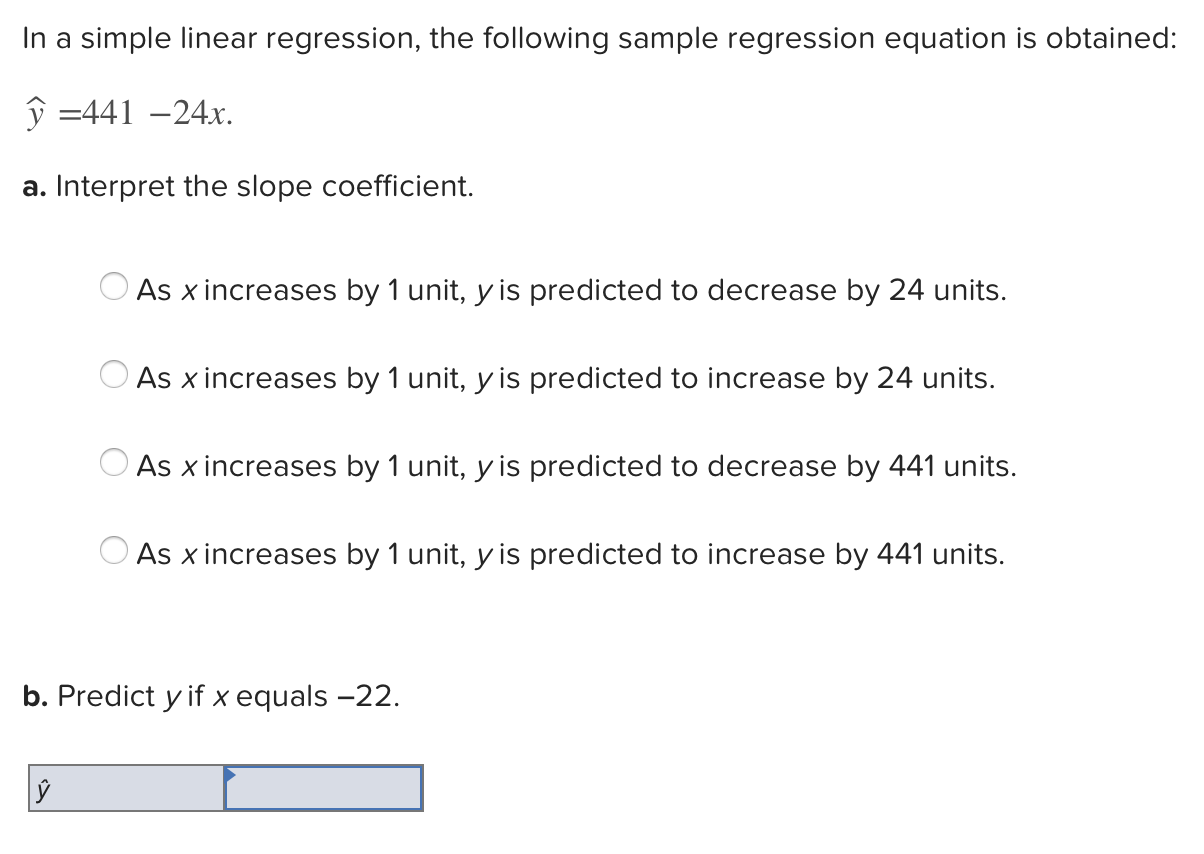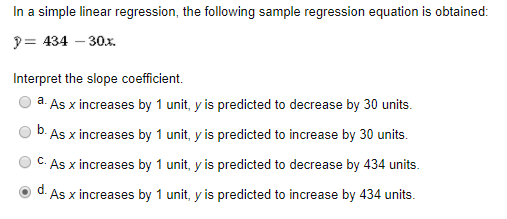

The F test value is 43,618 with a P-Value value less than 0.05, meaning that simultaneously the selling price variable has a significant effect on bread sales. Next, we interpret the output for the F test and t-test as shown in the image below:īased on the picture, we interpret the F test value. The remaining 15.5% is explained by variations of other variables not explained in this model. We can interpret this value that the variation of the bread sales variable of 84.5% can be explained by the variation of the selling price variable. We can see the value of R square is 0.845. This value indicates whether the model is good or not. In interpreting the regression output, the first thing to look at is the R Square value in the model summary, as shown in the following figure:īased on the model summary output, we see the value of R Square. Now is the time for us to interpret the regression analysis output that we have tested. Not long ago, a simple linear regression analysis output appeared. This step can be seen in more detail in the image below: Move the bread sales variable (Y) into the dependent box and the selling price (X) variable into the independent box. Then a new window will appear “Linear Regression”.

We have successfully input the data and are ready to start the simple linear regression test.įrom the various menu options available in SPSS, please click the “analyze” menu, then click “regression” and then click “linear”.

Next, fill the measure column with a scale to indicate that the data measurement scale is interval/ratio. Neither variable has decimal values so that the decimal column can be omitted. Next on the second line, fill in the name with “X” and fill in the label column with “Selling Price”. Fill in the name with “Y” and fill in the label column with “Bread Sales”.
#INTERPRETING SIMPLE LINEAR REGRESSION EQUATION HOW TO#
How to input data into SPSS can be input directly into the application or copy-paste data from Microsoft Excel. Data collected previously can be directly input in the data view window. SPSS consists of two windows, namely “Data View” and “Variable View”. The data that has been collected will be processed using SPSS. In this case, we will use simple linear regression analysis, where there is only one independent variable. The measured variables consist of the selling price of bread as the independent variable (X) and the number of bread sales as the dependent variable (Y). A simple linear regression analysis was carried out to answer the manager’s question. We can call the collected data time-series data. The manager then collected ten years of price and sales data. Therefore, the manager will analyze to find out how the influence of the selling price of bread on the number of bread sales. Surely there will be an impact from the price increase, the manager thought. It is easier for you to understand the application of linear regression analysis and how to interpret the results.įor example, in a case study, a company “ABC” manager in a city “XYZ” was asked by the company’s owner to increase the selling price of bread in his company. On this occasion, I will give an example of a case study that will be analyzed using simple linear regression. Some reference sources, this assumption test is often also called the Gauss Markov assumption. We can call it the Best Linear Unbiased Estimator (BLUE). If a regression model has passed the assumption test, such as the normality test, heteroscedasticity, linearity, and others, the model estimation will be consistent and unbiased. In simple linear regression analysis, several assumptions must be met. Based on that, Kanda Data on this occasion will share a simple linear regression analysis tutorial and how to interpret the output in SPSS. There are many benefits of using simple linear regression analysis. Simple linear regression was used to analyze the regression model with only one independent variable. Researchers often choose linear regression analysis to determine the effect of the independent variable on the dependent variable.


 0 kommentar(er)
0 kommentar(er)
